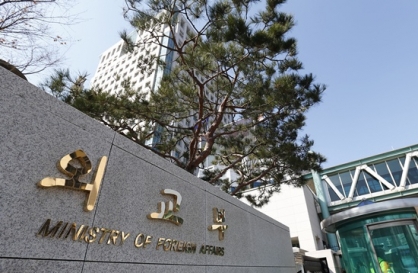The number of multicultural residents in the country has more than tripled over the past decade to 1.74 million this year, according to government data released Sunday. The figure accounted for 3.4 percent of Korea’s total population of 51.33 million.
The figure includes naturalized Koreans and their children, migrant workers, foreign students and immigrant spouses. Their number, which stood at about 540,000 in 2006 when the government began compiling related data, has since increased by an annual average of 14.4 percent.
More than a third of them live in Gyeonggi Province surrounding Seoul, followed by the capital city with 26.3 percent and South Gyeongsang Province with 6.2 percent. Some districts in the Seoul metropolitan area are densely populated with foreign residents, with their cultures showing through.
Korean society has become more open, globalized and multicultural in keeping with the steep increase in the number of foreign residents.
In 2012, Korea became the world’s seventh country with a population of more than 50 million to have its per capita income exceed $20,000. A growing presence of expatriates here has contributed to the nation achieving these landmark figures. Without the immigration of foreign workers and spouses in particular, Korea’s total population, which increased by an annual average of 0.6 percent over the decade until 2014, would have fallen.
The country’s gloomy long-term population projection calls for further boosting the upward trend in the number of foreign residents.
With the fertility rate forecast to be stuck at the current level of 1.24 children per woman, Korea’s population is estimated to be 170,000 short of the optimal number needed to guarantee sustainable growth in 2045. The shortage will expand to 1.26 million in 2050, 3.51 million in 2060 and 7.8 million in 2080, according to estimates by the national statistics office.
A report by a local research institute proposed increasing the number of foreign residents in the country to 3 million by 2030. If not, the paper warned, Korea would begin to suffer from a severe workforce shortage, which would further reduce its growth potential.
Government policymakers and legislators should pay due attention to the proposal, which is far from excessive, given Korea has the fastest-aging population and the lowest birthrate in the world. It should be noted that Japan is pushing for a plan to accept at least 200,000 immigrants annually, alarmed by a forecast that its population could shrink to a third of the current 127 million by 2110, unless drastic efforts are made.
The Korean public is also required to improve its perception and attitude toward immigrant workers and other foreign residents if the country is to sustain its demographic vitality and economic prosperity. It needs to be recognized that they are no longer mere guests to the country and should be allowed to join native Koreans in building a more harmonious and prosperous society.
More effective support should be offered through programs to help foreign residents adapt to and play meaningful roles in Korean society.
It is also necessary to tackle problems with the growing number of illegal foreign workers in a more serious manner. Local employers should be discouraged from hiring and treating them under substandard conditions while consideration may be given to legalizing the status of those who have worked here for a certain period without causing trouble.
It is positive that no excessive repercussions were prompted by the Supreme Court’s ruling last month that recognized the basic labor rights of foreign nationals who were working illegally in the country. Though lawbreaking should never be justified, this attitude, which accords with the principle of due reward for work, will help the country become a place for more foreign talents to choose to work in.
The figure includes naturalized Koreans and their children, migrant workers, foreign students and immigrant spouses. Their number, which stood at about 540,000 in 2006 when the government began compiling related data, has since increased by an annual average of 14.4 percent.
More than a third of them live in Gyeonggi Province surrounding Seoul, followed by the capital city with 26.3 percent and South Gyeongsang Province with 6.2 percent. Some districts in the Seoul metropolitan area are densely populated with foreign residents, with their cultures showing through.
Korean society has become more open, globalized and multicultural in keeping with the steep increase in the number of foreign residents.
In 2012, Korea became the world’s seventh country with a population of more than 50 million to have its per capita income exceed $20,000. A growing presence of expatriates here has contributed to the nation achieving these landmark figures. Without the immigration of foreign workers and spouses in particular, Korea’s total population, which increased by an annual average of 0.6 percent over the decade until 2014, would have fallen.
The country’s gloomy long-term population projection calls for further boosting the upward trend in the number of foreign residents.
With the fertility rate forecast to be stuck at the current level of 1.24 children per woman, Korea’s population is estimated to be 170,000 short of the optimal number needed to guarantee sustainable growth in 2045. The shortage will expand to 1.26 million in 2050, 3.51 million in 2060 and 7.8 million in 2080, according to estimates by the national statistics office.
A report by a local research institute proposed increasing the number of foreign residents in the country to 3 million by 2030. If not, the paper warned, Korea would begin to suffer from a severe workforce shortage, which would further reduce its growth potential.
Government policymakers and legislators should pay due attention to the proposal, which is far from excessive, given Korea has the fastest-aging population and the lowest birthrate in the world. It should be noted that Japan is pushing for a plan to accept at least 200,000 immigrants annually, alarmed by a forecast that its population could shrink to a third of the current 127 million by 2110, unless drastic efforts are made.
The Korean public is also required to improve its perception and attitude toward immigrant workers and other foreign residents if the country is to sustain its demographic vitality and economic prosperity. It needs to be recognized that they are no longer mere guests to the country and should be allowed to join native Koreans in building a more harmonious and prosperous society.
More effective support should be offered through programs to help foreign residents adapt to and play meaningful roles in Korean society.
It is also necessary to tackle problems with the growing number of illegal foreign workers in a more serious manner. Local employers should be discouraged from hiring and treating them under substandard conditions while consideration may be given to legalizing the status of those who have worked here for a certain period without causing trouble.
It is positive that no excessive repercussions were prompted by the Supreme Court’s ruling last month that recognized the basic labor rights of foreign nationals who were working illegally in the country. Though lawbreaking should never be justified, this attitude, which accords with the principle of due reward for work, will help the country become a place for more foreign talents to choose to work in.
-
Articles by Korea Herald




![[Weekender] Korean psyche untangled: Musok](http://res.heraldm.com/phpwas/restmb_idxmake.php?idx=644&simg=/content/image/2024/05/02/20240502050841_0.jpg&u=)

![[Eye Interview] 'If you live to 100, you might as well be happy,' says 88-year-old bestselling essayist](http://res.heraldm.com/phpwas/restmb_idxmake.php?idx=644&simg=/content/image/2024/05/03/20240503050674_0.jpg&u=)











![[Herald Interview] Director of 'Goodbye Earth' aimed to ask how we would face apocalypse](http://res.heraldm.com/phpwas/restmb_idxmake.php?idx=652&simg=/content/image/2024/05/03/20240503050732_0.jpg&u=)
